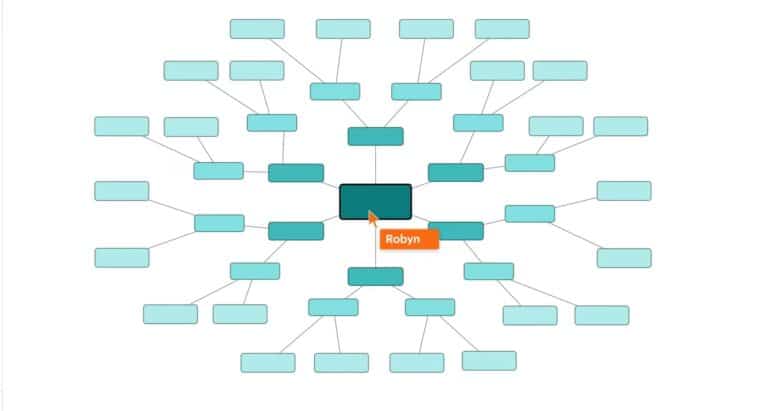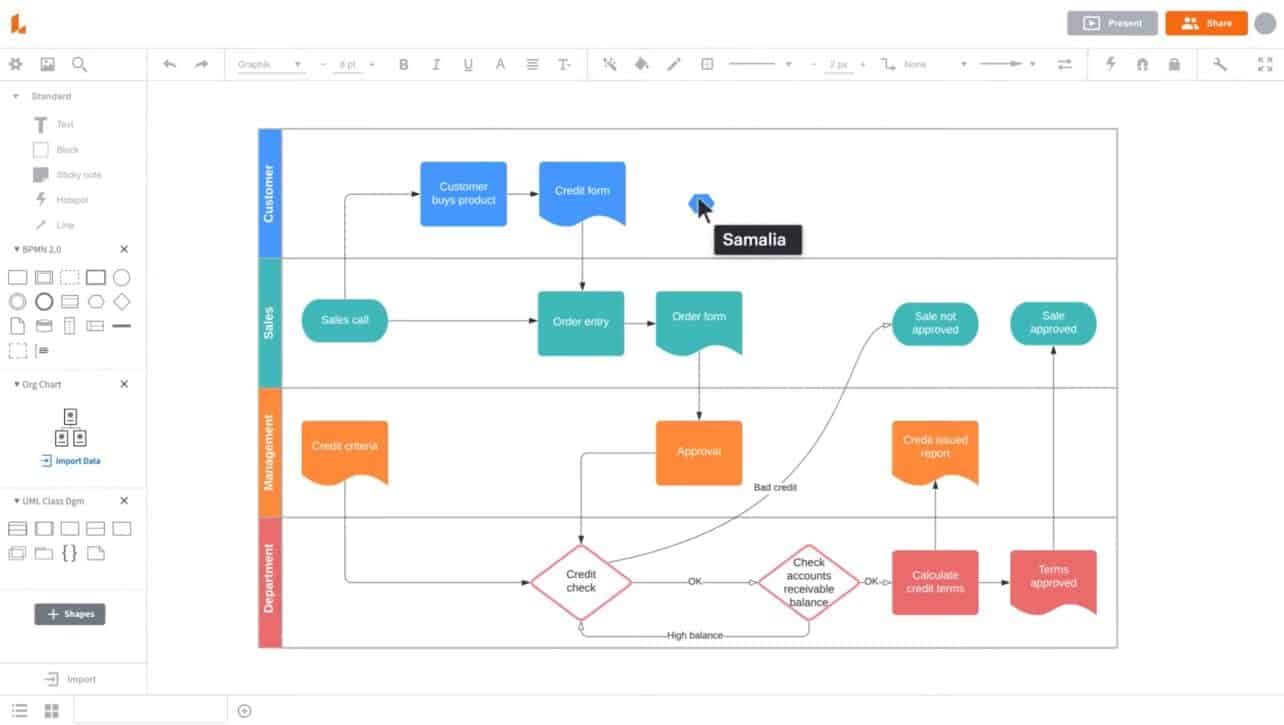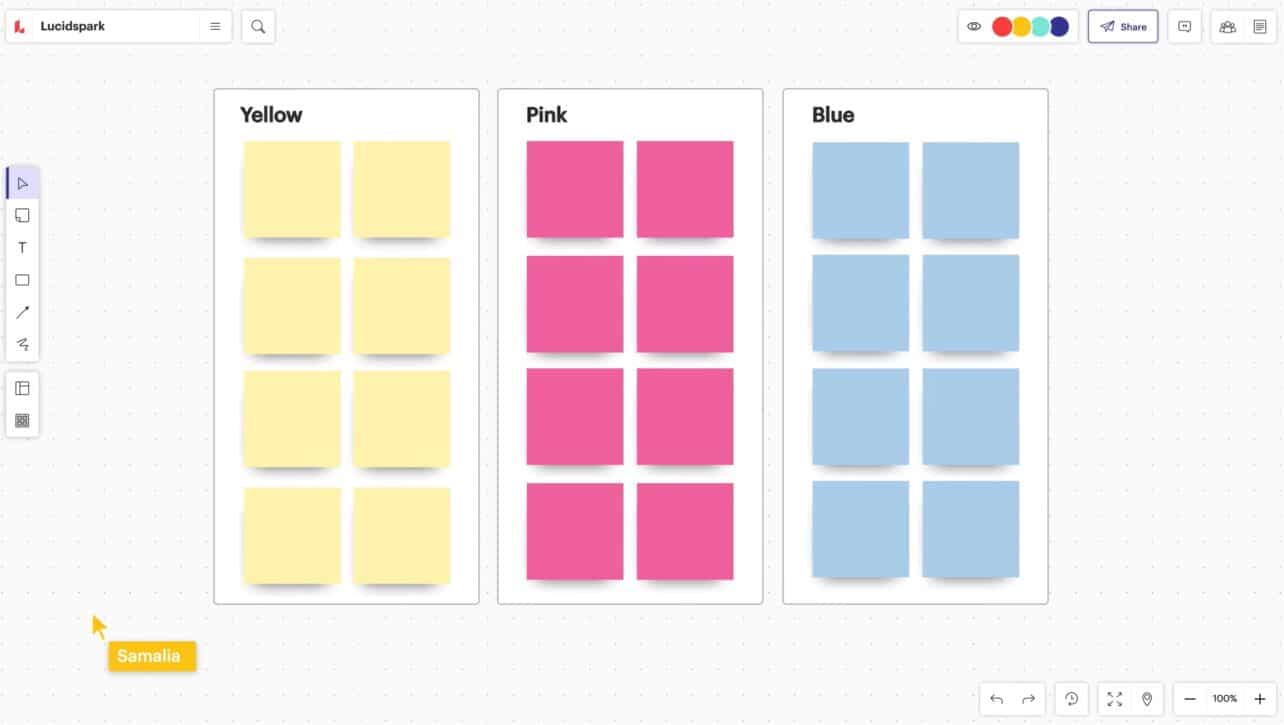Lucid Software offers a visual collaboration suite that more and more companies use. The vendor helps them by visually simplifying collaboration, so building products, services and processes run better. Yet, in Europe, Lucid is not known by most organizations. According to our conversation with CEO and co-founder Karl Sun, the company wants to change that.
Lucid is a company that saw a gap in the market in 2010 with intelligent diagramming software. Together with Ben Dilts, the other founder and current CTO of Lucid, Sun set out to reinvent an existing software category. “As far as we’re concerned, the visual aspect is key to collaboration. We help teams see and build the future. That’s our mission,” said Sun. Simply put, Lucid wants to make collaboration visual with smart diagrams and virtual whiteboards to be clear and better compared to analogue sessions.
Lucid has now launched several core products for visual collaboration. Before we get into it, let’s explain a little more about Lucid’s vision.
What problem does it solve?
A software vendor with a mission generally tries to solve a problem of many companies. Sun is also aware of this when he thinks of the experience of Dilts. “Before founding Lucid, Dilts worked at a start-up on a complex healthcare product. It was a regulated product with specific data flows. The team that built the product tried to map the workflow and product with traditional software.”
The team was using Microsoft Visio at the time but ran into limitations. “There was one person that was the designated software owner. This person had to update the diagrams and send updates via email. In addition, the owner received all printed documents with notes and lines on paper to enter into the system. It was inefficient and replicated work. Besides that, the software owner sometimes missed updates, so the overview of the diagrams was incomplete,” explains Sun about Dilts’ experiences. Too much time was spent maintaining and managing the software. This valuable time could have been used to build the intended product. Dilts thought there must be something better but couldn’t find anything he liked.
Intelligent diagrams
Based on the experience Sun and Dilts felt something had to happen, and they built Lucidchart. It allows organizations to build all kinds of intelligent diagrams. “It can be a software architecture diagram or a network infrastructure diagram. But business processes, a mind map and an organizational structure can also be mapped visually. You can make any visual representation,” explains Sun. Lucidchart is therefore widely applicable because of manually setting up diagrams. Employees can choose standard templates that are useful for their situation. It is possible to add all kinds of boxes and lines to map out how everything works. The visual representation can be viewed from a central location, and you can also zoom in on a detailed level to see how things are performing and add comments.
What makes Lucidchart unique, however, according to Sun, is its intelligence. In recent years, it has added options for connecting to data sources. The software can establish connections with commonly used business software. “Think of an HR system, marketing automation system and cloud infrastructure. We extract the information from the systems and automatically connect the relationships and dependencies. There is extra intelligence involved in automatically creating the diagrams. We let employees add information about the functioning of a system on top of the visualization,” says Sun.
According to the CEO of Lucid, the automation step is beneficial to visualize existing complexity in application landscapes. Large organizations often use more than 1,000 applications for different purposes. For example, a sales associate uses CRM systems, lead generation tools, lead categorization software, and email programs. It faces a significant challenge if a sales team wants to map out their workflows, connections, and data flows. Lucidchart wants to simplify that with visual diagrams that automatically collect data and keep everything up-to-date.
Making connections
The broad applicability of Lucidchart does raise some questions for us. How can the software deal with all kinds of data? Sun indicates that there are usually connectors for the widely used business applications. Salesforce, Asana and Jira are examples of popular supported apps, says Sun. However, sometimes connectors with commonly used software are also missing. In particular, Sun mentions Workday, the HR software Lucid currently explores. According to Sun, however, such integrations cannot simply be built from scratch since systems are sometimes closed and prefer to share little data.
On the other hand, the broad applicability of Lucidchart also means that data must be obtained from less used tools to support specific employees. Building connectors by Lucid is then not immediately profitable. To support such scenarios, Lucid gives developers options for building the connectors. According to Sun, this also happens regularly, as many Lucidchart users are already software developers by origin. For them, building connectors is relatively simple.
After diagramming software, Lucid focuses on whiteboards
Lucid became big with Lucidchart, and the company still gets the most business from it. Sun indicates that after the adoption of Lucidchart by the market, Lucid started looking for new products. The result is Lucidspark. “Suppose an organization is planning a brainstorming meeting about the strategy for the coming quarter. Then employees normally use sticky notes for their ideas. Each employee then has their coloured notes to map out the idea,” says Sun about the, in his view inefficient, way of working.
With the virtual whiteboard Lucidspark, the company wants to remove some limitations. For example, the software no longer obliges employees to come to a physical location for brainstorming and explaining ideas. Lucidspark also needs to make the sessions more accessible for many people because hundreds of employees can share their ideas. To keep it clear, the shared ideas are labelled to be filtered. Think of viewing the ideas of the sales department and displaying ideas that employees appreciate.
Ultimately, Lucidspark wants to bring some efficiency back to the brainstorming sessions. “You can set up a voting system to bring out the best ideas for discussion in a meeting. Nobody wants to brainstorm endlessly to determine which ideas have to be further developed for a concrete plan. Prioritizing is, therefore, an important part of Lucidspark. For example, many scrum teams use the software to create a plan and prioritize ideas,” said Sun.
Scaling has started, important time ahead
With Lucidchart and Lucidspark, Lucid has found the way up. The financial figures confirm this in any case. At the start of 2020, the company had a valuation of around 1 billion dollars (about 890 million euros); by mid-2021, there was already a value of 3 billion dollars due to an investment of half a billion. The revenue has also increased, Sun assures us.
The CEO sees that the upward trend is partly a result of staff working from home a lot. “People are often more productive when they work from home. At the same time, working from home leads to less visibility. Direct colleagues often know what coworkers are doing. However, you are not aware of the activities of indirect colleagues that you normally encounter at the coffee machine. They talk less with others, and there is less opportunity to brainstorm about new ideas. This while the employees are concerned about the next innovations and the creativity of their company,” says Sun about the situation that has arisen. A favourable development for Lucid because it can offer that visibility and bring back collaboration. Lucid, therefore, fully capitalized on the new opportunities that lie ahead. During the Covid-19 pandemic, the company opened new offices and expanded the team significantly.
With the introduction of Lucidscale in October, Sun is convinced to have launched a third product that will ensure further growth. The solution visualizes the often complex cloud environments to make the thousands of components understandable. The software solution is built for the hybrid world we live in and can work with AWS, Azure and Google Cloud. Lucidscale automatically creates smart diagrams that organizations can build on and adjust to their preferences on a detailed level. For example, they can tailor the views to the position of employees. For example, security engineers need a specific view of the infrastructure, while an application engineer wants to oversee completely different things. Overall, Lucidscale seeks to provide employees with a foundation for infrastructure design and development, application deployment, and cloud troubleshooting.
Lucidscale adds to the growth plans of the existing position of Lucidchart and Lucidspark. Therefore, the ambition is to expand further and gain a foothold in Europe. We will see what the company has to offer to prove itself further in the coming time.


